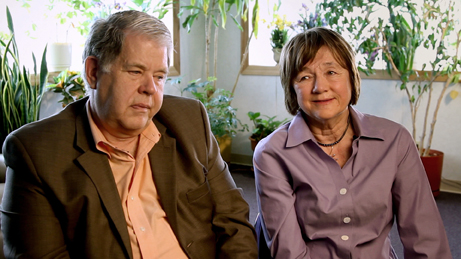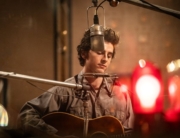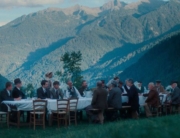After Tiller is a wrenching portrait of life and death decisions where even the definition of “life” is emotionally laden for doctors and pregnant women considering abortion.
The title demarcates the impact of the murder of Kansas doctor George Tiller in May 2009, the eighth killing of a U.S. abortion provider by extremists from the “pro-life” movement, including three other doctors, two clinic employees, a security guard, and a clinic escort. Tiller was a lightning rod as an expert on abortions after the 25th week of pregnancy, the less than one percent of all abortions, which have been facing increasing state regulation since Supreme Court decisions have permitted restrictions related to the health of the mother and the viability of the fetus to live on its own—determinations that can be more emotionally subjective than medically objective. His slaying galvanized four colleagues he mentored to carry on his work in his memory. As political pressures and personal risks keep increasing, these four are the only doctors in the country offering this option.
Directors Martha Shane and Lana Wilson interview and follow the personal and professional lives of each doctor, who recount their admiring connection to Dr. Tiller. In the American heartland, Dr. LeRoy Carhart is seen being hounded by local and state regulatory kerfuffles from rural Nebraska to Iowa and Maryland, where he finds a supportive landlord. White-haired, empathetic Dr. Warren Hern looks like Dr. Welby in wooded Boulder, Colorado, a city riven between liberals and conservative evangelicals. He recounts how the pressures of his job took a toll on his first marriage, but when he networked with abortion providers around the world, he met and fell in love with a single mother from Cuba active in the field. They now share a family. In Albuquerque, New Mexico, Dr. Susan Robinson and Dr. Shelley Sella (a former midwife) take turns providing clinic coverage, even flying in from their homes in California. All rue the problem of finding doctors to replace them if they retire.
But the exceptional heart of the documentary is the intimate cinema verité scenes when their patients reveal why they have come to this very difficult request to have an abortion so late in their pregnancies. Grappling with legal and professional guidelines for their practices, the doctors listen intently and sympathetically as the women are heard tearfully trying to present a convincing justification to proceed, including the context of their own religious principles.
The filmmakers edit the cases to generally go from those with clear medical diagnoses of fetuses with severe birth defects in planned pregnancies (such as a partial brain or a painfully doomed physical condition) to circumstances of unplanned pregnancies (from rape) and to women in much more ambiguous circumstances made worse by procrastination born of denial. The doctors also have to consider that prospective patients can be less articulate or confessional about how they came to this quandary, particularly those with less education and finances. The stressed clinics’ staffs have to screen emails and phone calls from all over the country, even from overseas, and there are file drawers full of refusals.
Unlike Heidi Ewing and Rachel Grady’s 12th & Delaware (2010) that gave equal time to both sides, the opponents aren’t interviewed directly, but are briefly represented through TV news, speeches, and testimony at rallies and legislative hearings (such as for Nebraska’s 2010 Pain-Capable Unborn Child Protection Act), as well as through the graphic signs at demonstrations and protests outside the clinics. But the quiet anguish of the women and the dedicated resolve of these frontline health care professionals linger longer and louder than the strident opposition.







Leave A Comment